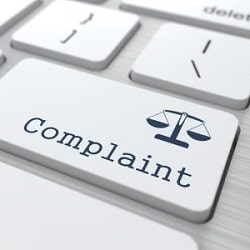
Complaints: LeO to nudge service providers to compromise
The Legal Ombudsman (LeO) has ditched plans to introduce mediation as another route to settling dispute between lawyers and their clients after a trial showed limited interest.
It also saw limited success in trialling methods to encourage lawyers to settle their cases without needing to involve the ombudsman.
We reported in August [1] that LeO was running a ‘proof of concept’ trial to see whether formal mediation would enable the service to resolve cases without the need for a full investigation.
But according to a report to the most recent meeting of the Office for Legal Complaints – the body that oversees LeO – offering a telephone-based session with a trained mediator had very limited success.
Only 10% of service providers contacted were interested in mediation, and on occasion the customer did not then wish to participate. The proportion of cases where both parties agreed to try mediation was 8%, and half of these resolved successfully.
The report said: “Offering mediation to all newly created files in the pre-assessment pool going forwards would require at least two full time administrators, and 1.5 mediators. This would result in a maximum of 24 files resolving through mediation each month, without the need for a full investigation.
“The resource requirement exceeds the costs of employing investigators to resolve an equivalent number of cases per month.
“Furthermore the time taken to contact parties and attempt to arrange mediation increases the customer journey in the cases that do not successfully mediate.”
LeO’s management concluded that there were insufficient benefits to offer mediation as part of its standard business process at this stage.
LeO also tested a ‘shuttle’ procedure, whereby service providers were contacted and asked if they wished to increase their original offer to resolve a complaint. If so, this was communicated to the complainant in the hopes of reaching an agreement.
This was even less successful than mediation: 14% of service providers were keen to discuss the pilot, but only 6% were willing to make an increased offer to attempt to resolve matters. The improved offers were accepted in 2% of cases.
The report said: “The level of resource required to offer shuttle negotiation on all newly created files as standard is disproportionate to the success rate.
“However, the service providers contacted appreciated being made aware that a complaint had been brought to the Legal Ombudsman, and service providers who were willing to make an increased offer appreciated the ability to have the Legal Ombudsman communicate this on their behalf.”
There was similar feedback from a third initiative, in which LeO ‘nudged’ service providers by giving them its guidance on reasonable service and remedies, and making them aware that a complaint had been made.
“This initiative did not require the service provider to make further contact with LeO unless/until the matter was resolved.”
While it was not possible to fully report on the impact of this initiative until it was clear if the cases reached LeO, “direct correspondence was received on some cases, with 2% of cases advising that they would be inclined to make a further offer, 2% advising that they considered the matter to be resolved already, and a further 5% providing us with some additional information on the complaint and their views on it”.
The report concluded: “There are improvements that can be made to our early engagement with service providers and the information we provide to them. This may encourage earlier resolution between the parties without the need for a full investigation, and may improve the standard of information available on file once a case is taken for investigation.
“The executive will consider how best to integrate the learning from the shuttle and nudge initiatives into our front-end business process, in order to encourage early resolution of complaints and to improve customer experience.”